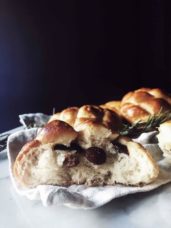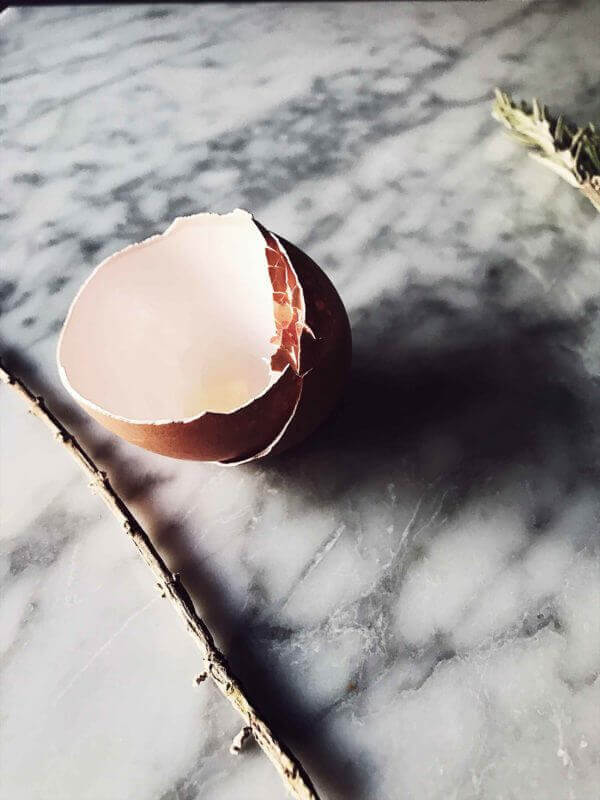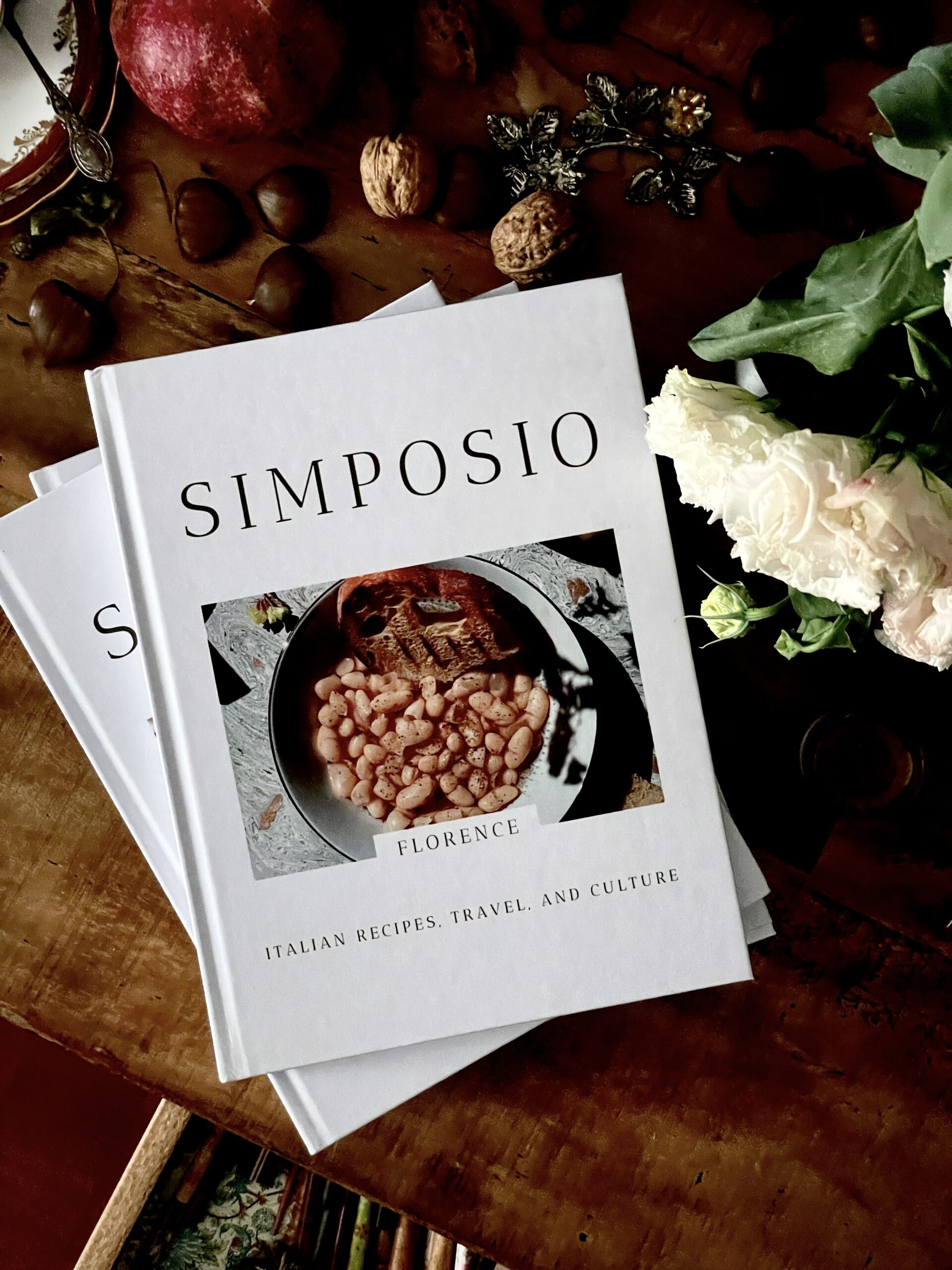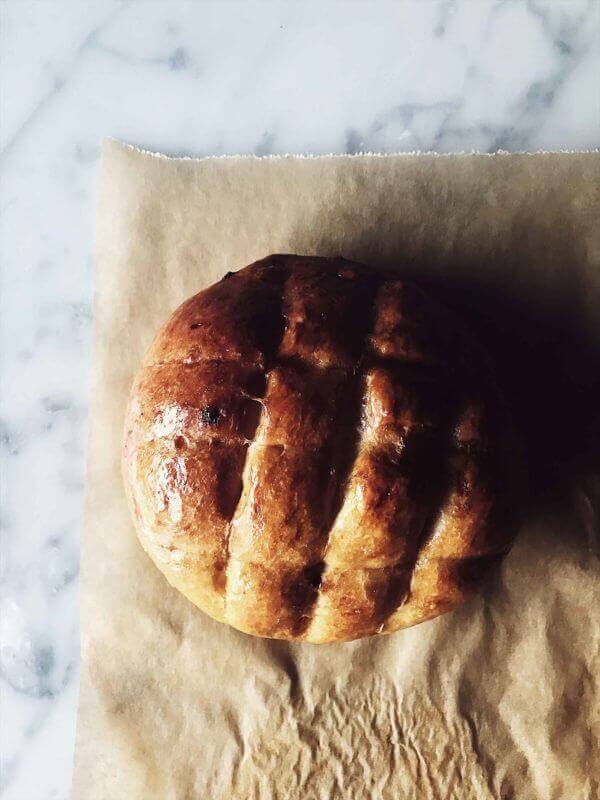In this post, we’ll bake an authentic Italian Easter bread recipe: Pan di Ramerino, traditional rosemary and raisin sweet bread rolls from Tuscany.
What is Pan di Ramerino?
Pan di Ramerino is a classic Tuscan Easter bread recipe with deep historical roots. Ramerino is the archaic Tuscan word for rosemary, giving this bread its distinctive herb-infused aroma. This lightly sweet Italian bread is perfect for breakfast, but it also pairs beautifully with cheese—try it on a cheese board for a gourmet Italian experience!
Traditionally eaten during Lent, Pan di Ramerino is one of Tuscany’s most beloved Easter bread recipes, enjoyed across generations.
How to Make Pan di Ramerino
This traditional Italian sweet bread is easy to make if you’re familiar with long leavening times and bread-making techniques. It features a soft, pillowy base enriched with rosemary-infused olive oil, sugar, and raisins soaked in Tuscan Vin Santo dessert wine. No Vin Santo? No problem! Use water or another sweet fortified wine as a substitute.
If you’re new to bread-making, this is the perfect Italian recipe to start with! Embrace the art of baking, practice kitchen mindfulness, and discover some secrets of authentic Italian cuisine.

Italian Easter bread recipe: Pan di ramerino
Ingredients
- 7 oz Manitoba flour 200 gr
- 1 oz raisins 25 gr
- 1 rosemary sprig
- 1 teaspoon fresh baker's yeast 8 gr - 2.6 oz
- 3 oz water 90 gr - room temperature
- ½ teaspoon brown sugar
- 1 oz extra-virgin olive oil 30 gr
- 1 pinch salt
- ¼ glass Vin Santo optional, you can use water instead
- 1 egg
- 1 teaspoon sugar
Instructions
-
Dissolve the yeast in 1/3 of the water (room temperature).
-
In a bowl, mix 25 g (0.8 oz) flour, brown sugar, and the yeasted water. Cover and let rise overnight in a warm spot.
-
The next day, soak the raisins in Vin Santo (or water).
-
Finely chop the rosemary needles and heat with the olive oil in a small saucepan. Once boiling, remove from heat and let cool.
-
Add the remaining flour, water, and salt to the risen dough base (biga). Knead using a mixer with a dough hook for 5 minutes.
-
Strain the rosemary-infused olive oil into the dough. Knead for 5 more minutes until fully absorbed.
-
Drain the raisins and add them to the dough, mixing just until incorporated.
-
Let the dough rest for 15 minutes, then divide and shape into 4 rolls.
-
Whisk the egg with a teaspoon of water and brush over the rolls.
-
Let rise for 25–30 minutes, covered, in a warm spot (or inside the oven - light on).
-
Preheat the oven to 350°F (180°C).
-
Deeply score the rolls vertically and horizontally. Brush again with the egg mixture and let rise for another hour.
-
Bake for 15 minutes.
-
Mix sugar with a teaspoon of water and brush over the hot rolls for a glossy finish.
Recipe Notes
Serving & Storage
-
Enjoy warm or at room temperature.
-
Store in an airtight container for up to 2 days.
Baking for the Spirit: The Art of Italian Bread-Making
From the Italian Colors Newsletter…
“I know it takes time, I know some recipes will let you rise bread for two hours, and that’s it. Don’t listen (or maybe just a few times).
Baking, like cooking, is an art. So the time spent over it is never wasted.
Have you ever regretted spending hours on a recipe? Well, maybe the time the result wasn’t exactly what you expected.
But really…
Was it a loss of time? I suppose your answer is no. Cause you know, as well as I do, that even the time a big mess came out of the oven… although the tears and the frustration, you learned something. And you spent your time enriching yourself, your tummy, and your spirit. Which is not something ubiquitous these days.
Am I wrong?
So take your time (maybe on the weekend), to weigh and mix and pour and wait for fermentation and leavening… and back to mixing and kneading. And enjoy the result: a delicious Italian Easter bread to savor and share.
It’s so much healing.”
Embrace your Da Vinci life in the kitchen!
Claudia







